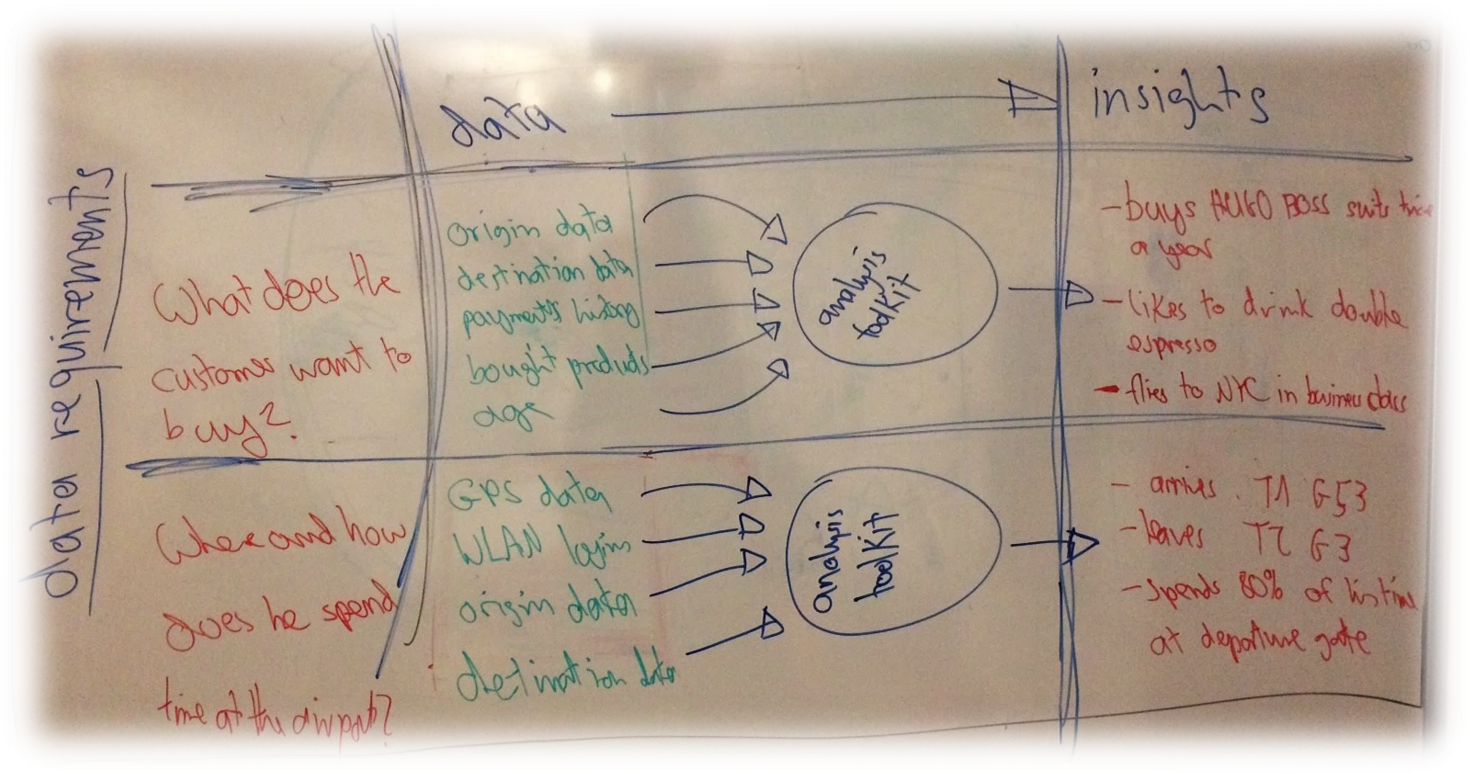
The Data Circle – a structured framework to leverage data
It’s a well-known fact that the amount of data collected is increasing. But effectively using data to improve customer experience remains more than trivial.
Challenges companies face include (but are not limited to)
- How to structure and leverage existing data within the company
- How to integrate external data
- How to process the data to generate new insights or services without harming customer trust and regulation
The Data Circle Framework structures data-related business processes into 5 phases:
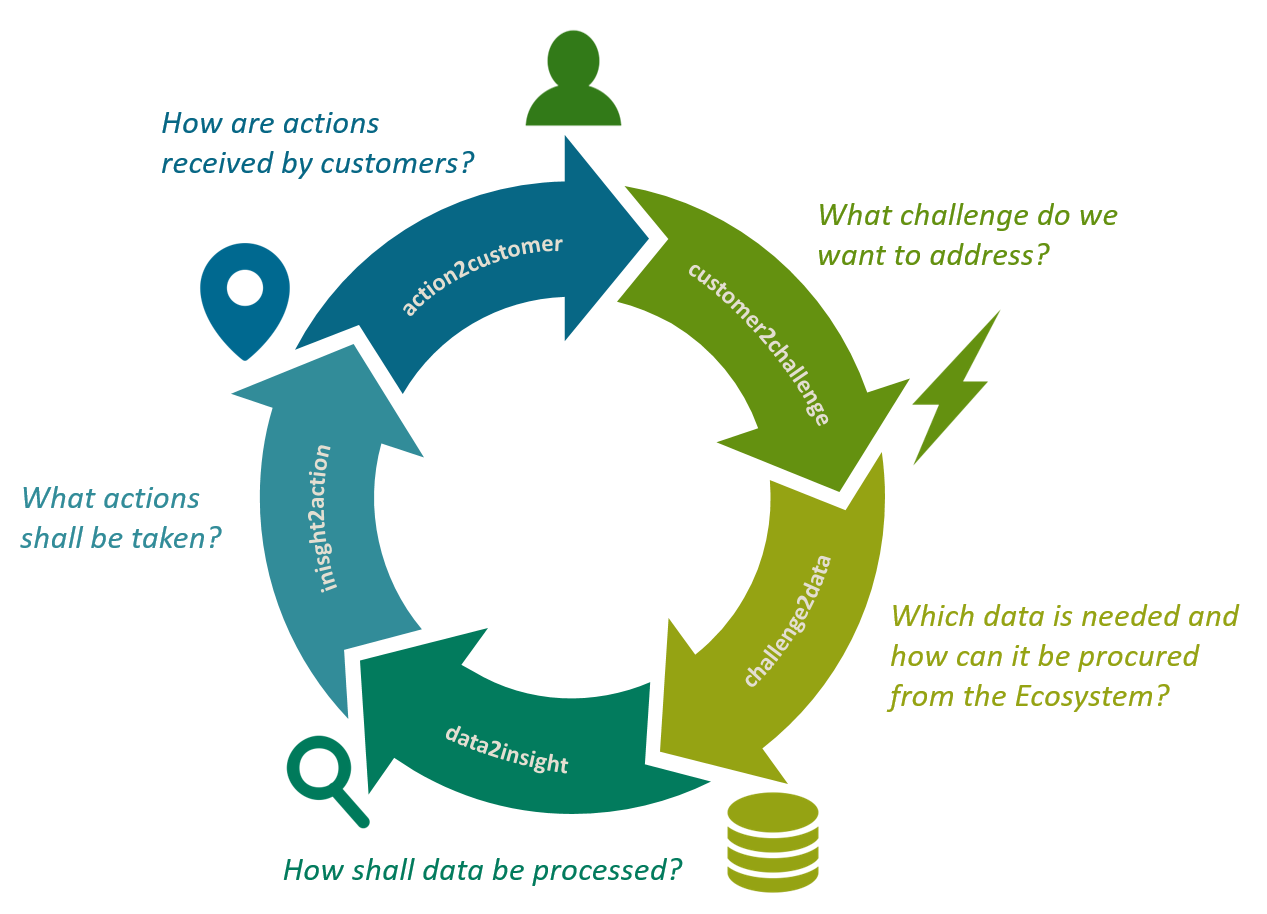
Summarizing the five stages of the Data Circle

Customer2challenge – What challenge do we want to address?
This stage is usually the first one of the Data Circle. It is all about narrowing down the challenge to a specific and concrete question. Thinking about expected benefits, understanding what stakeholders are affected and framing the environment in which the challenge takes place are important building blocks in this phase.
Objective: At the end of this phase, the problem at hand is clearly stated and the context well-defined.

Example:
An airport operator might face the challenge of how to optimize the path of travellers through the airport, to improve customer experience and increase revenue.
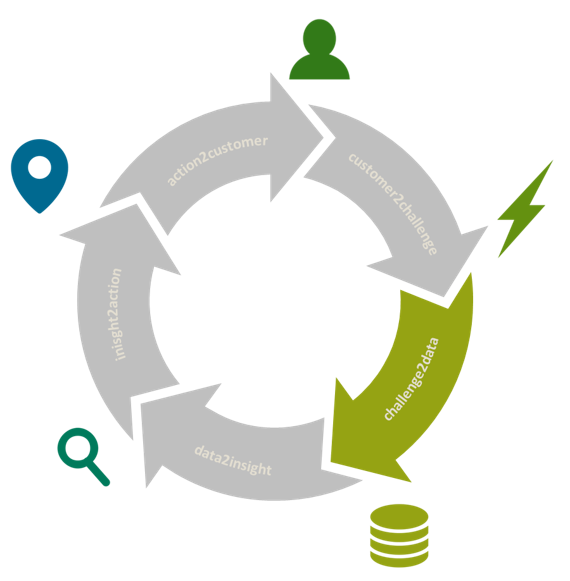
Challenge2data – Which data is needed and how can it be procured from the Ecosystem?
Once a specific challenge is at hand, the next step is to identify data needed to address it. This may include structuring the data sources, formats, and further information which are relevant for the challenge.
Objective: All relevant data to solve the challenge is identified (including sources, cost, etc.)
Example:
To understand the travellers’ path, the airport operator wants to know where travellers linger in the airport and what they typically buy. Data that contain such information may be:
Location-based data such as GPS coordinates, WLAN Logins, origin and destination (which may be data the airport operator has access to or not)
Transactional data (typically residing within banks and retailers)
Personal data such as age or shoe size (probable unknowns to the airport provider).
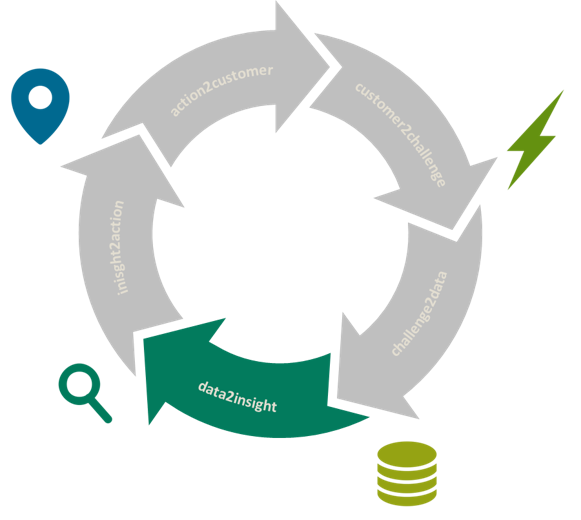 Data2insight – How shall data be processed?
Data2insight – How shall data be processed?
Identified and procured data are only valuable when processed in a meaningful way. This step is all about combining the data to gain insights and displaying those insights understandably.
Objective: At the end of this phase data is analyzed and insights are explicitly represented.
Example:
Where do customers linger in the airport:
- Traveller type X arrives at gate 53 in terminal 1
- Traveller type X leaves from gate 2 in terminal 2
- Traveller type X spends 60% of his time at the departure gate
What does the customer want to buy:
- Traveller type X buys Hugo Boss suits twice a year
- Traveller type X likes to drink Double Espresso
- Traveller type X flies to NYC in Business Class
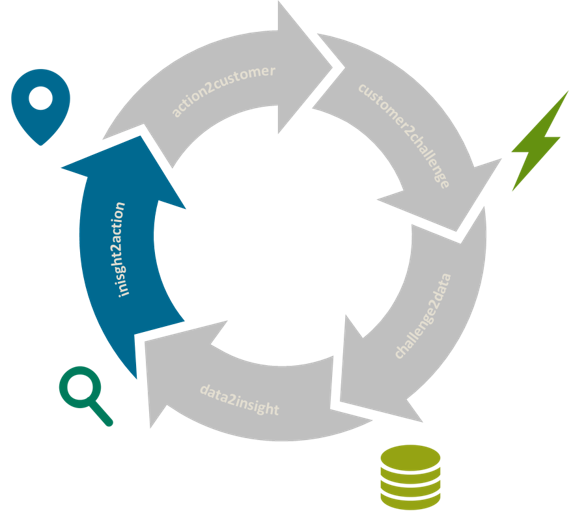
Insight2action – What actions shall be taken?
In this phase, insights are translated into a set of ordered, measurable actions. The team decides which insights to act upon and prepares success metrics.
Objective: At the end of this phase, newly derived actions are prioritized, and a success measurement model is in place.
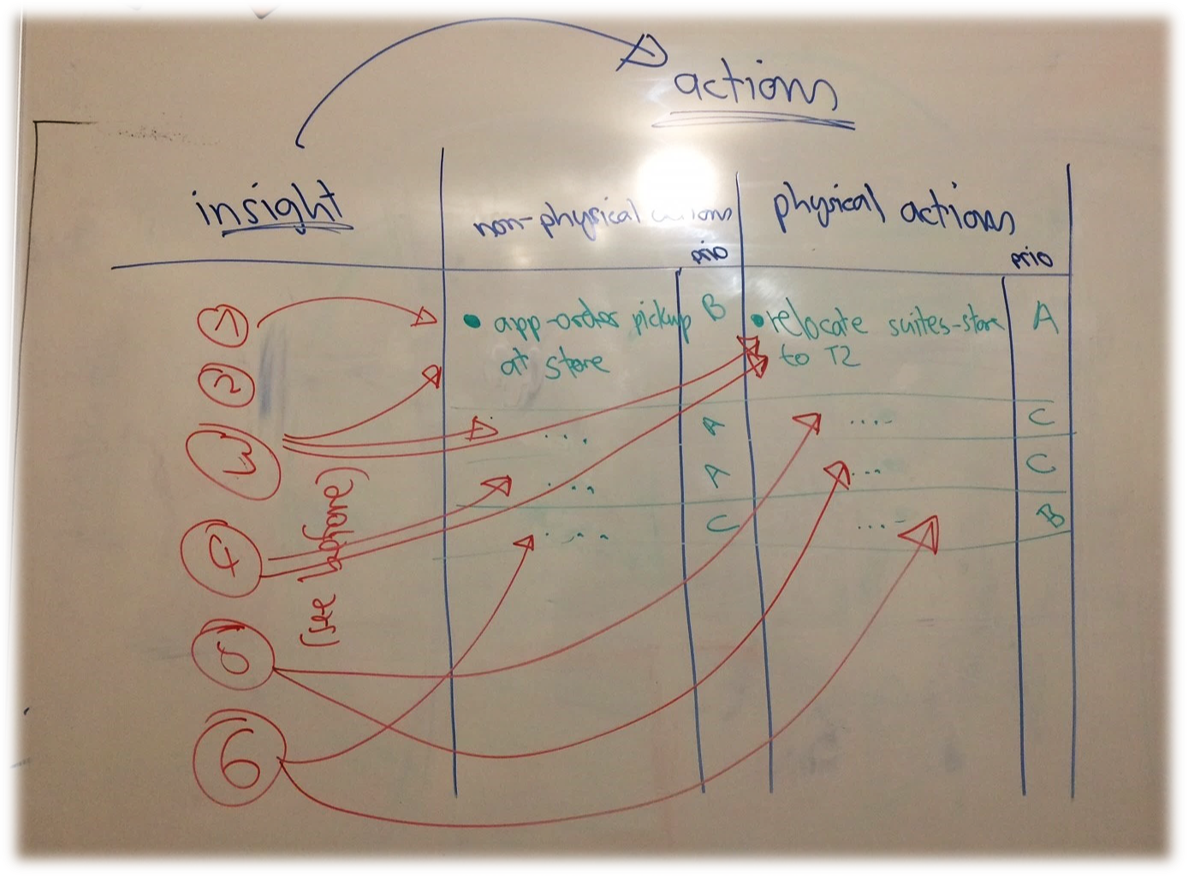
Example:
The airport operator has decided to move the Hugo Boss shop into Terminal 2. Also, the airport app shall offer to select touchdown of a traveller’s plane as trigger to order a Double Espresso, which can be picked up at the optimally located bar on the way to the departure gate.
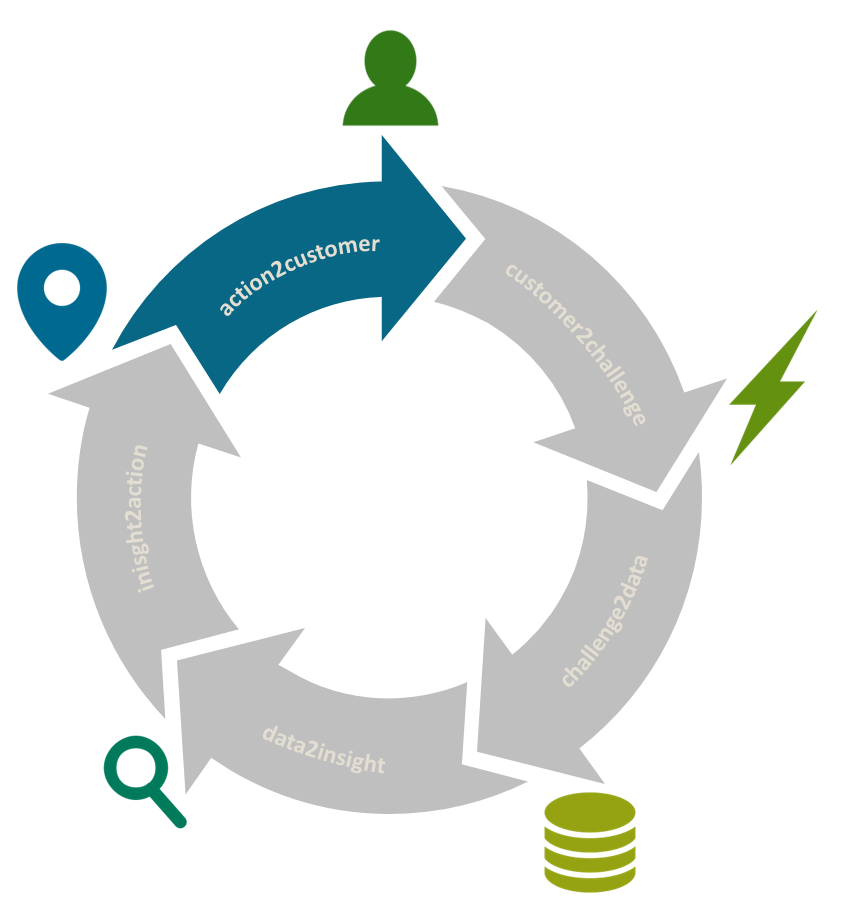
Action2customer – How are actions received by customers?
In this phase, new company actions meet customers (in most cases in the form of new services). Implementing further customer-facing activities will oftentimes raise new challenges. A new iteration of the Circle begins.
It’s important to note the following 3 points:
1) Entrance into the circle
The Data Circle can be joined at different stages. If a company already has gained insights from analytics, it can enter the Data Circle at stage “Insight2action”.
2) Varietey of Data Circle applications
The application of the Data Circle varies according to the challenge. The following table contains some examples of how we have applied the Data Circle in projects.

A project sometimes only addresses certain stages of the Data Circle. Defining the challenge (customer2challenge) has in our experience been an indispensable step.
Sometimes, several phases can melt into one: E.g., if a company works with sensors that turn data directly into action, phase data2insight merges with insight2actions, and there’s no data analysis and interpretation as in the airport example (see example 2).
3) Tools for each phase in development
The Data Circle serves as a framework, along which the Consumer Data Innovation Consortium (bringing together Universities from different industries and researchers from the Universities of St. Gallen and Leipzig, see Infobox below) develops instruments and methodologies to master each phase successfully. Natural iterations of the data circle allow to continually hone the tools.
Developing instruments for the Data Circle in the CDI Consortium
Using Design Sprints we played through the Data Circle with ten companies (see airport operator example) and raised companies’ requirements with regards to instruments and models most urgently needed. Based on those requirements, the consortium will develop artefacts in and between 5 workshops:
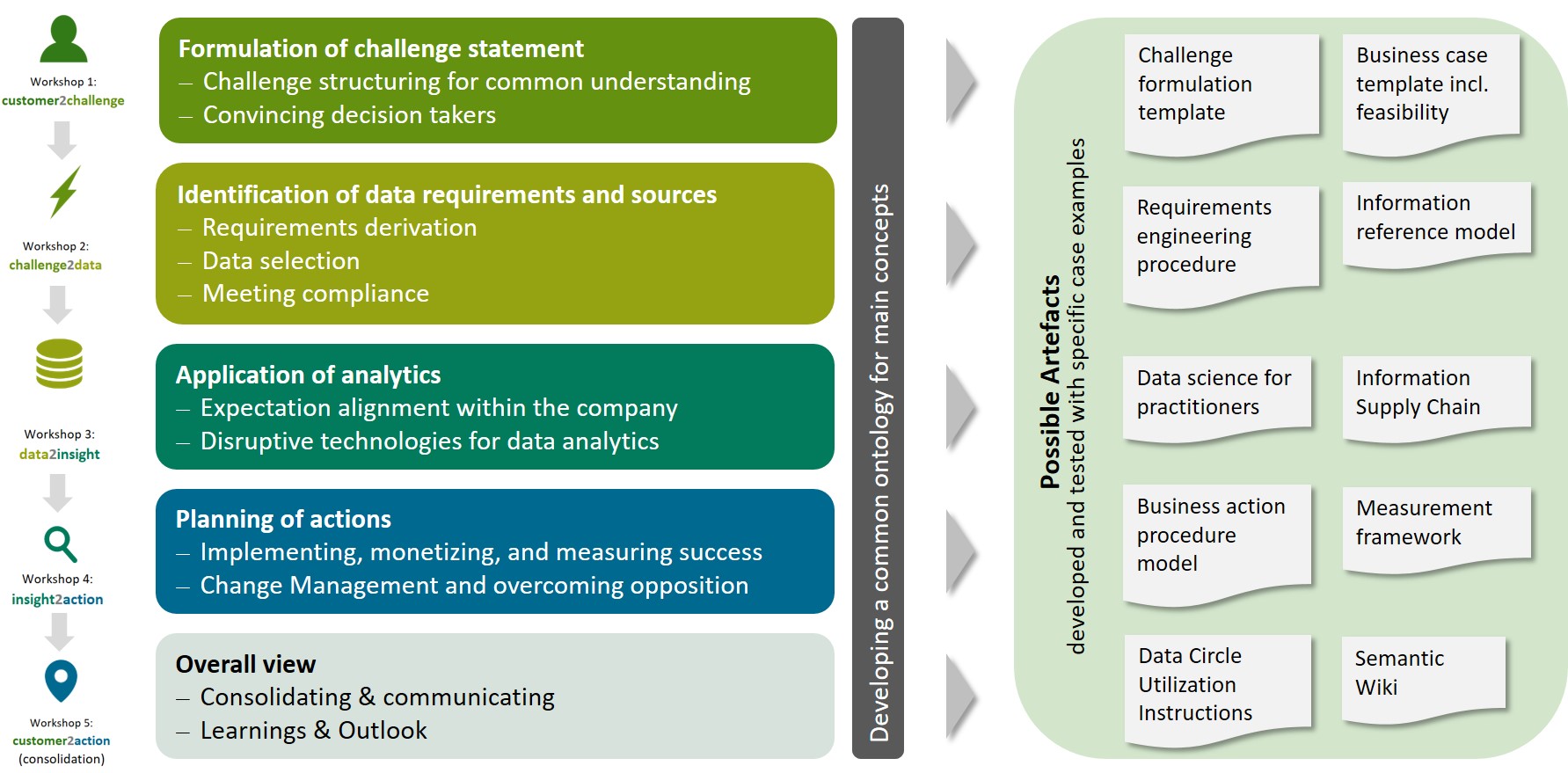
Do get in touch if you’d like to learn more about the Data Circle!



